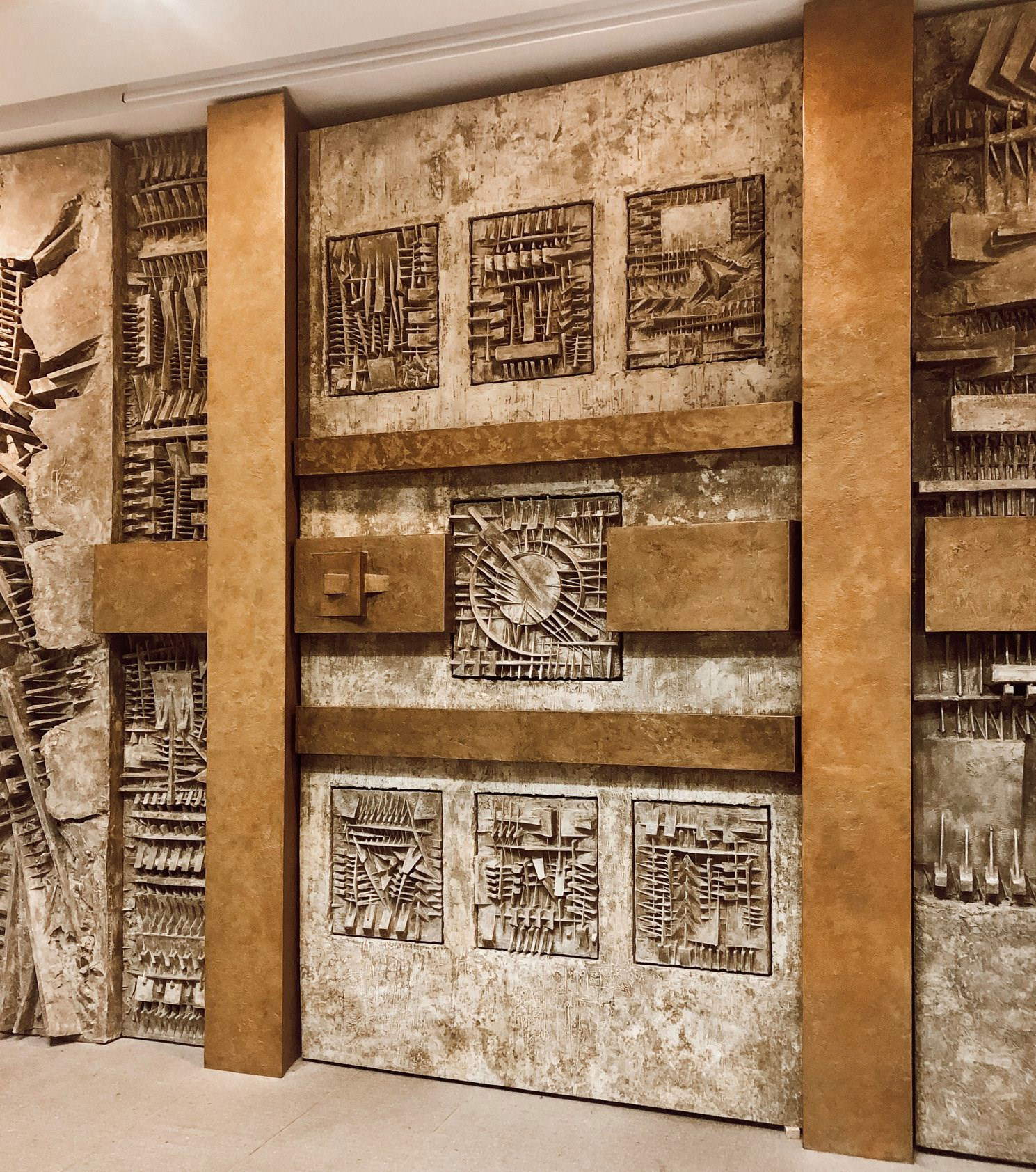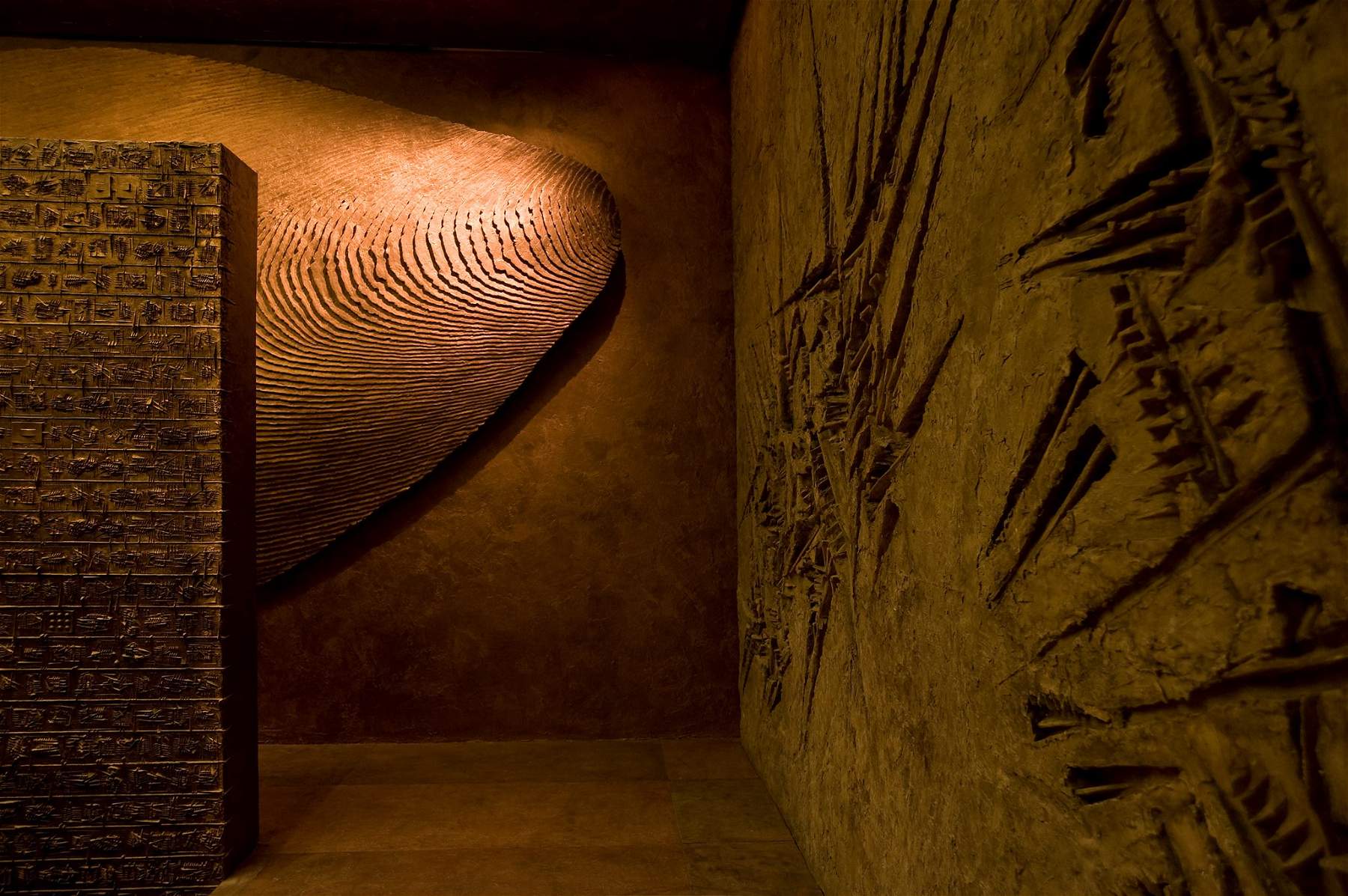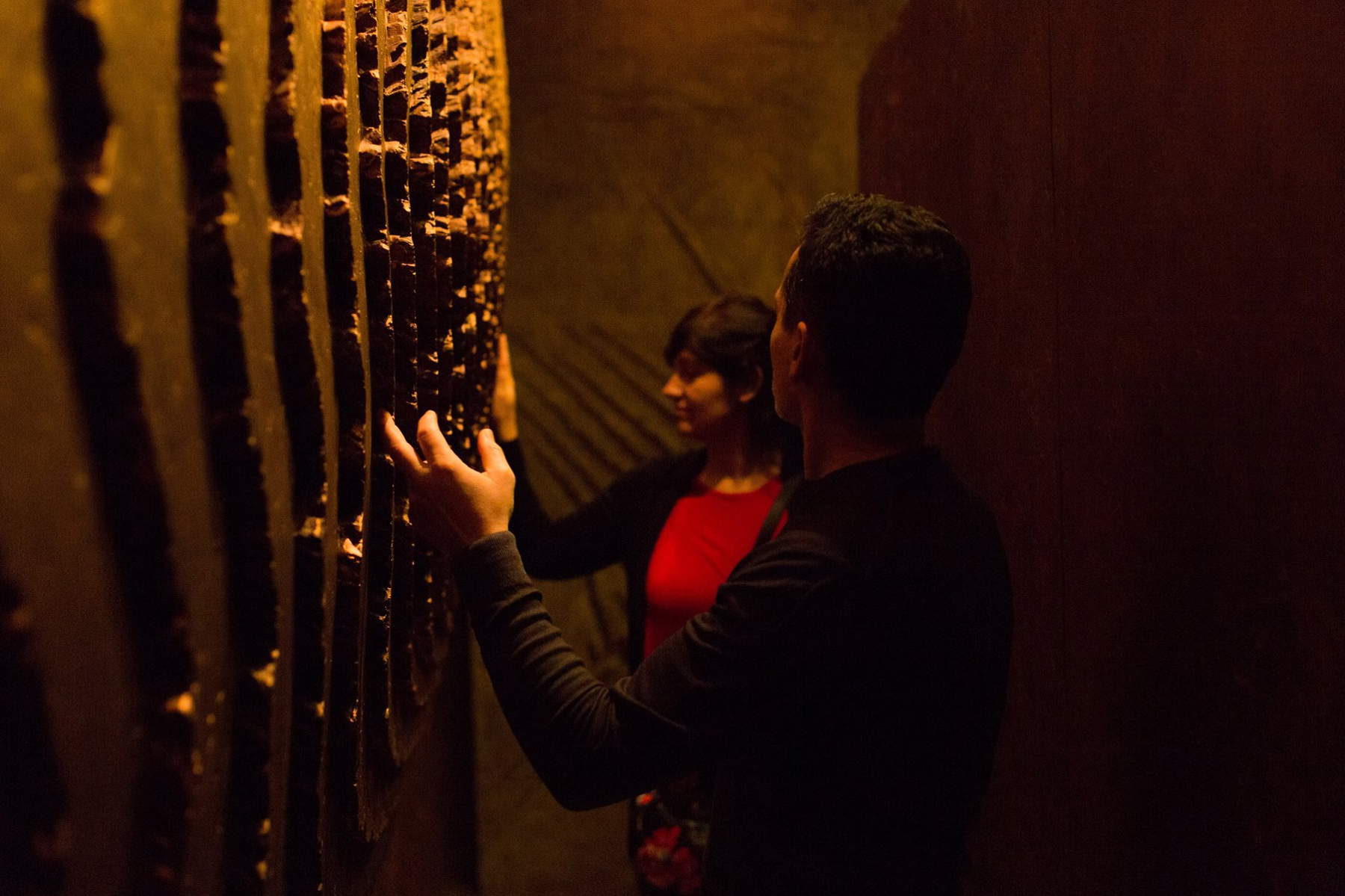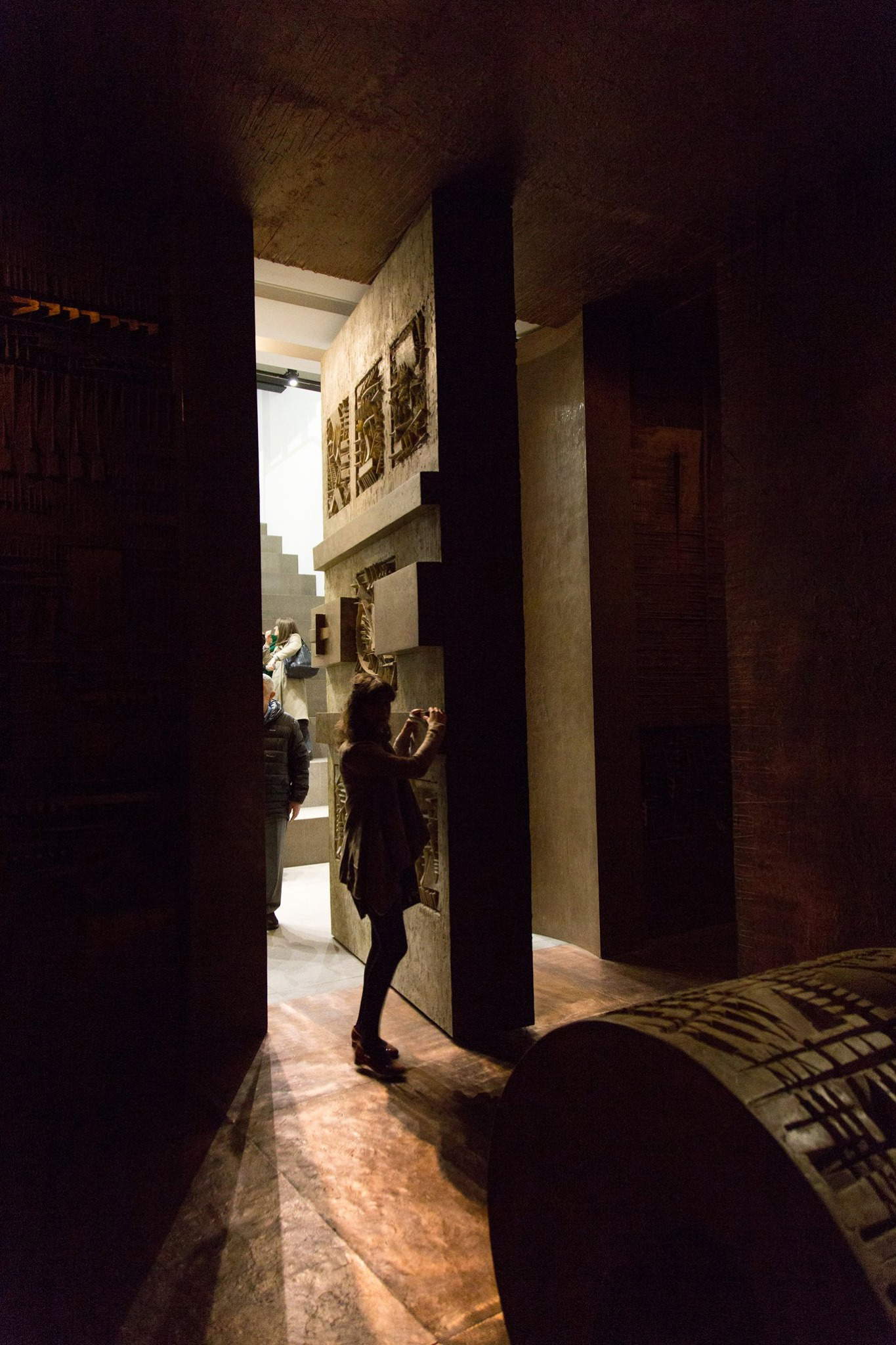“My entrance into the labyrinth is an invitation into the meanders of a path, where time is transformed into space and space in turn becomes time. ” These are the words of the artist Arnaldo Pomodoro himself when we find ourselves inside his artwork, his Labyrinth.
Pomodoro’s is a strange labyrinth, different to what we are usually accustomed to, starting from its entrance, which is located in the basement of the showroom of the Fendi fashion house in Milan , and then continuing to the discovery of a dark place without any verdant vision. Born in Monferrato in 1926, the artist spent his entire childhood in Pesaro, but from 1954 he established his residence and atelier in Milan. In his works of the 1950s a peculiar sculptural writing emerged, characterized by high-reliefs that always aroused various interpretations by art critics. “I have always been fascinated by all signs, especially archaic ones,” the artist stated in an interview with critic Sandro Parmiggiani. “Even writing has attracted me, from primordial signs in caves, to the tablets of the Hittites and Sumerians, so much so that I dedicated one of my works, Entrance into the Labyrinth, to Gilgamesh, which is the first (c. 2000 B.C.) great poetic and allegorical text on human experience. The imprints I dig, irregular or dense, into the artistic material, the wedges, the piercings, the threads, the tears, come to me initially from certain archaic civilizations.” An art mixed with writing that presents a plastic character, evocative of a shared past whose precise origin has now been lost in time. It is a forgotten, unknown language that nevertheless unconsciously conveys a sense of strange, ancient familiarity that draws the viewer into an indefinite era.



Giulio Carlo Argan, too, in his essay Arnaldo Pomodoro: time and memory wrote: “Of Pomodoro’s plastic signs it has also been said that they are like a cuneiform alphabet. They are rather a code whose cipher is lost or which refers to an unknown language of which, moreover, in the epigraphic documents that are given to us, we can from the frequency and distribution of the signs reconstruct the rhythm. The sheer visuality, even the tangibility of the messages seem to seal their muteness.” And indeed, the artist, constantly devoted himself to that fierce, and at the same time delicate, three-dimensionality of matter by deepening his research into solid forms. His works featured spheres, disks, pyramids, cones, columns and cubes made of polished bronze, often torn, corroded and hollowed out inside. His relentless quest to break the perfection of geometric forms in order to reveal the mystery inherent in them became a fundamental element of his artistic production.
The artist discovered the space to accommodate the labyrinth during the search for a shed that would be suitable for the construction of the model of his sculpture Novecento, which was later placed in Rome’s Eur. This was the disused site of the Riva Calzoni steel mills, located on Via Solari in Milan, famous for its hydraulic turbines designed under the guidance of Guido Ucelli di Nemi. The artist immediately glimpsed the potential of such a place and decided to begin various renovations that led to its opening to the public in 2005, transforming it into a lively cultural center.Inside it he had a kind of theater created, and it was from this dark space far from the world that Pomodoro resumed the project of his personal labyrinth, which had been on hold for too long, and with great passion he began to work more and more intensely, saying, “I am so deeply immersed in this labyrinth that I have the impression that I have found a good system to continue working as long as I can.”



Perhaps this is precisely why its path reveals itself as an atypical labyrinth, made up of silences and no heavenly, verdant visions, but one that punctually reflects on man’s natural fear of the mystery of existence and expresses that fear of what the stones might reveal about ourselves. One begins a journey between faintly lit copper slabs and thus proceeds, step by step, into the half-light. To access it, the pilgrim must pass through a majestic entrance door made of fiberglass with copper and lead elements, adorned with the artist’s characteristic graphic motifs, constantly recalling those suggestions of ancient worlds and contemporary tensions so beloved of the sculptor. Next, having now reached the interior of the network of corridors, one encounters a large roll engraved with ancient codices that reveals itself to be a tribute to ancient Mesopotamian civilizations and the Sumerian cuneiform writing, through which the Epic of Gilgamesh itself was handed down. It is a very ancient cycle of poems whose earliest known version was written in Akkadian in Babylonia in the 19th century BCE, and its story revolves around the events of the fifth king of Uruk: a demigod in search of an equal in temperament, battle and love.Along the way, we then move from Assyro-Babylonian art to Brancusi’s volumes, from the fevered haste of futurism, to archaic forms of writing, and begin to lose, room by room, all spatiotemporal cognition. Once you find its center, you come across a kind of mausoleum dedicated to the Count of Cagliostro, who was known for his gifts as an adventurer, magician and alchemist, as well as for his commitment to freedom of thought. It is a place, this, that seems to evoke the oppression and sacrifice he suffered during his imprisonment in the fort of San Leo, symbolizing the struggle for freedom and tolerance.
One finds oneself alone, immersed in a space that at that moment becomes a dystopian world of its own, where life outside seems a distant and muffled memory. Pomodoro’s work presents itself to the viewer as a journey through history and the human psyche, an experience that transforms time into space and space into time, as the artist himself states, where every room and every detail represents an investigation into the human soul and the universe of art, offering a unique and immersive experience.
 |
| Arnaldo Pomodoro's Labyrinth: a journey through history and the human psyche |
Warning: the translation into English of the original Italian article was created using automatic tools. We undertake to review all articles, but we do not guarantee the total absence of inaccuracies in the translation due to the program. You can find the original by clicking on the ITA button. If you find any mistake,please contact us.